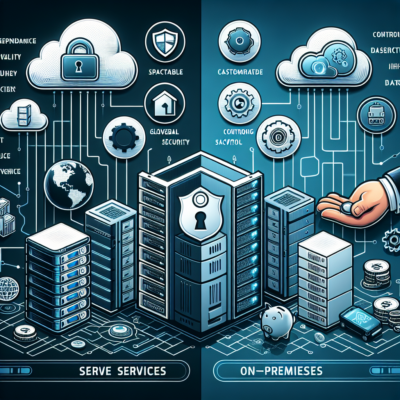
Cloud vs. On-Premises: Compare rental options for servers and security devices
Introduction
With the development of the digital industry, protection against cybersecurity threats has become one of the key priorities of enterprises. Given the vast number of services that work with the cloud and the increasing proportion of the risk of cyber threats, each company should use the most reliable protection mechanisms. When it comes to choosing between cloud and on-premises services, addressing servers and security devices to handle them should also be carefully considered. This blog post will help analyze the advantages and disadvantages and choose the best option for your business.
Cloud Services
Pros:
Scalability: Cloud services’ main advantage is their scalability, which allows expanding or shrinking resources at any time.
Cost: Usually, cloud services require fewer costs, including start-up and support.
Accessibility: Your teams can access these servers from any location in the world, which is helpful for remote companies.
Cons:
Internet reliance: Reliability on an internet connection makes cloud services non-viable in regions where the connection may be interrupted.
Security risks: Work on the cloud may contain vulnerabilities if not configured appropriately.
Data control: On the cloud, data storage will possess less control over your data and its organization.
On-Premises Services
Pros:
Control: Local services provide more control over data and its organization.
Security: In general, local services are more protected, as they do not feed data warehouses that can be accessed from the internet.
Customization: Local services can be tailored to the needs of each particular business.
Cons:
High Upfront Costs: On-premises solutions often demand a high upfront investment in hardware and infrastructure.
Maintenance: On-premises solutions need to be maintained and updated frequently which can go as far as time-consuming, frustrating etc.
Limited Scalability: An on-premises system may be a challenge to scale when you expand, which is increasingly common in today’s marketplace.
Comparing the Two Options
Key Considerations:
Business Size & Growth: If you have a small business or limited growth potential, then on-premises solutions should fit. On the other hand, if you have a fast-growing business or are expanding internationally, cloud based solutions will probably work better for your company.
Data Sensitivity: If the business of an enterprise caters to sensitive information, on-premises solutions make more sense.
Budget: Cloud-based will be cheaper if you have a low budget.
Conclusion
Finally, we saw that cloud-based solutions and on-premises have their pros and cons. So, take a while to think of your own business needs, as well as growth potential and definitely also cost – so you can wisely choose the best course. Make sure to carefully assess the trade-offs and always be responsive towards your data security & control.
Additional Tips
- Keep It All Up-to-date: This is true regardless of your solution, but whatever you settle on be prepared to have to regularly update / patch things in order not get caught out.
- Turn on Multi-Factor Authentication: Use multi-factor authentication to increase the security of your systems.
- Conduct Periodic Security Audits: Return periodic security audits in request to proffer and guarantee potential vulnerability.
With that in mind – and the tips above to help guide you through your considerations, both of cloud-based solutions as well as on-premises options – we hope this provides a helpful overview regarding what your security may look when it comes to protecting the sanctity of company data and ensuring ongoing operations.